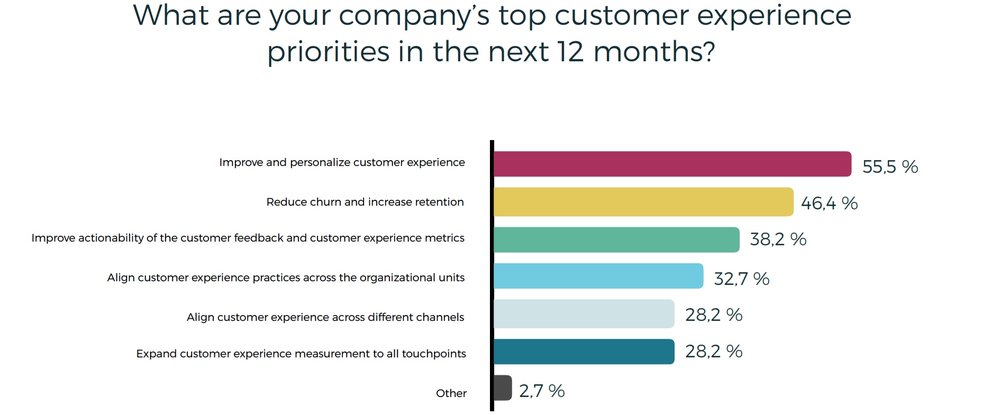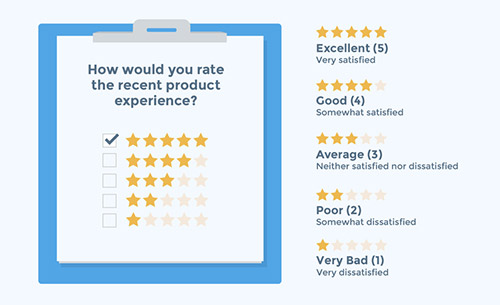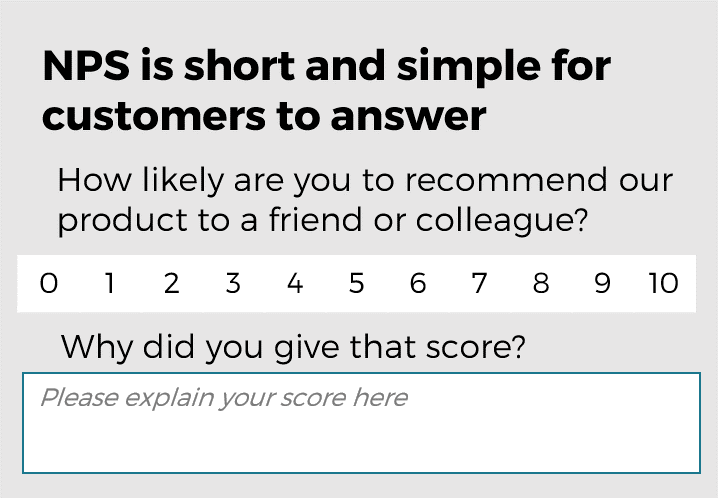Actionable Insights: What, Why and How

Last updated on September 26, 2022
Knowledge is power. It’s a cliche saying. But, like most cliches, it’s true. We spend lots of time, energy, and effort getting feedback and insight from customers. Whether it be through surveys, heat maps, or some other means, we try to learn all the time.
Gathering information is an important thing to do. But what’s most important is what you do with the information you get. Does it allow you to improve your product? Or, perhaps, it could help you overhaul your customer journey. Putting information to work for you is the only way to get any benefit from it.
The way you collect information matters too. How do you make sure you get the right information to inform business decisions? It’s not as straightforward as you may think.
In this article, we cover what actionable insights are, why they’re important, how to collect the information you want and some tips on taking action.
What are Actionable Insights?
Actionable insights are processed data sets that prescribe any direct, meaningful actions you can take based on the analysis of raw data.
For example, let’s say you’re looking through survey responses and see that you have a large drop-off point after the fifth question. The actionable insight would be to change the design of the survey and rephrase/change the question.
It wasn’t a hunch or something anecdotal that led you to that choice. You came to it after reviewing the information at hand and there were hard numbers you could look at. On the other side of the coin is data that you already know, or that you can’t find any sort of pattern for.
Example of actionable insights
Let’s go through some examples of actionable insights and non-actionable insights.
Example 1
Insight: An auto repair shop knows that the number of oil changes increases in May.
VS.
Actionable insight: An auto repair shop knows that the number of oil changes increases by 20% in May.
Example 2
Insight: Feedback from customers reveals that your App is not working properly.
VS.
Actionable insight: Feedback from customers reveals that 100 people have mentioned that the login function is not working properly.
Example 3
Insight: Your NPS score dropped by 5 points last month.
VS.
Actionable insights: Your NPS score dropped by 5 points last month due to an unsuccessful software update.
As you notice in the examples above, what distinguishes actionable insights from “normal insights” is that an actionable insight will give you concrete data that backs up the stated insights. Non-actionable insights are just statements, that are “nice to know” but you don’t get understand the “why” behind it.
Some customer insights tools like text analytics are specially developed for finding actionable insights from customer feedback.

With for example Lumoa, you can easily identify the topics that have the biggest positive or negative impact on your metric, and you can also see exactly by how much it drives the score up or down.
In addition, Lumoa also identifies the most mentioned insights in the feedback, that help you uncover issues and understand the customers better.
Why are Actionable Insights Important?
As we mentioned earlier, actionable insights help you make decisions. More than that, they allow you to make informed decisions.
Sometimes you have to try new things without any data to back it up, but there is a lot more risk involved in those circumstances.
In Lumoa State of CX report, said 38,2% of leaders within CX that they want to improve the actionability of customer feedback and customer experience metrics.

Actionable insights allow you to make strategic, well-thought-out decisions.
Though some may debate how granular to get, even the smallest details can bring huge returns. Google ran a test of 41 different shades of blue for advertising links to see which performed best. This may seem like overkill, but the end result was that they increased their ad revenue by 200 million dollars that year by optimizing the color.
Is that going to be a common outcome? Probably not.
However, it does illustrate how important it is to test and consider your options. Many companies say they want to be data-driven, but few actually put it into practice. According to Forrester, 74% of firms say they want to be “data-driven” but only a few – 29% – say they can actually connect the data they collect to actions they can take.
Gathering Insights
In order to get actionable insights, you need strong data. Typically, you can find actionable insights by collecting customer feedback.
The most common way to collect customer feedback is through, surveys, social media, online reviews, or chat. According to research, 64% of customers prefer to give feedback in-app. The most usual way to collect in-app feedback is through surveys.
If you want to collect feedback through surveys, then the three most commonly used surveys are: NPS, CSAT, and CES. Each has their pros and cons, but all are useful. Below is a brief overview of each type of survey.
- CSAT – CSAT is simply an abbreviation of “customer satisfaction.” In some ways, it’s a catchall term but refers to a pretty standard type of survey companies send out.

The goal of these surveys is to see how satisfied a customer is and generally focuses on one interaction. It’s very common to use a 1-10 or 1-5 scale to measure how satisfied they are. These surveys may include other questions to gain qualitative data, but the number of questions are directly used to calculate a CSAT score.
- NPS – Net Promoter Score surveys are very simple and only contain two questions. A scale question asking the customer how likely they are to recommend your company to someone on a scale from 1-10, and then a question asking why they gave the answer they did. It’s a very straightforward survey.

NPS is more worried about measuring the overall sentiment of customers to find who your “promoters” and “detractors” are. Also, since NPS surveys are shorter, completing them is generally easier for the customer.
- CES – Customer Effort Score is a little bit different than the two mentioned above since it’s more concerned with figuring out how much effort, as the name suggests, the customer had to exert to accomplish their goal.

Measuring the effort is useful to find if there are any pain points in your product or areas of friction you could smooth out. In terms of actionable insights, CES can provide the most straightforward information.
If you want to read more about different metrics, then check out our article where we have made a top list of the most popular customer experience metrics.
Turning Feedback Into Action
Once you’ve gathered your data the first step to turning it into action is organizing. There isn’t one specific way to do this but there are three buckets most feedback falls into:
- Customer Service Feedback
- Product Feedback
- Sales and Marketing Feedback
The categories mentioned above are the general buckets and you’ll probably have subcategories for each to get more granular. For example, product feedback may be broken down further to bugs and feature requests.
Data is only good to you if you can do something with it. As we mentioned above, after gathering you need to organize the data into different buckets. Doing this not only allows you to start understanding the value of the insights and what the data actually is telling you, but it also allows you to deliver it to the proper people and teams.
Once you’ve delivered the sorted data to a specific team, they can review it to see if there are common threads in the data. Perhaps you see that lots of customers are complaining about the lack of self-service options, in that case, you know that you need to build out those features. Though data is a good way to get new ideas, it’s also a way to validate ideas you already have.
If you had some plans to build out five different features data collected could help you prioritize building certain features over others. You may even find that customers aren’t excited about a proposed feature, meaning you could remove it from your roadmap altogether. That’s still a win because it frees up time for your team to work on projects users actually want.
Conclusion
Understanding your customer’s needs is very useful to your business. According to a Harvard Business Review study, the fastest-growing companies develop an advanced understanding of how their technology impacts the human experience. They constantly rely on feedback from customers to move forward.
Data is only useful if you put it to work for you. Gathering information can be a tricky first step. Once you’ve found the best method to get feedback, you need to organize the information. Deliver the data to the right parties so they can dive deeper and find new insights or confirm ideas. Once you have those insights prioritize, make a plan, and execute. When you complete those steps you’ll be well on your way.

